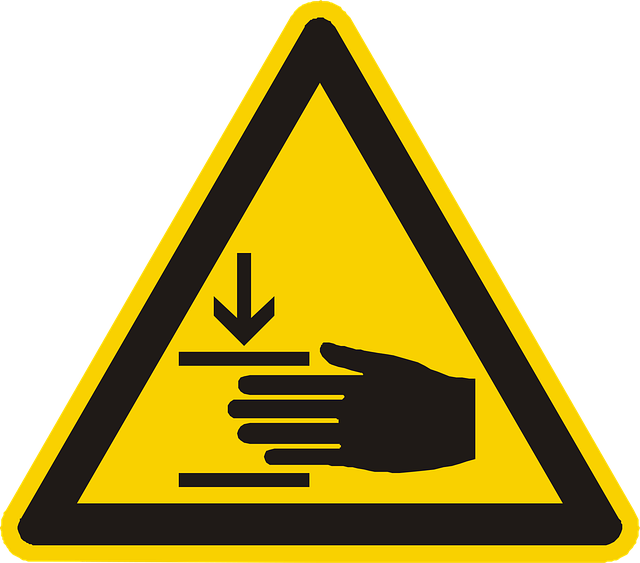Dog Bite Laws: Navigating Risks, Impact on Insurance Claims

Dog bite laws, varying by region, are critical regulations that protect victims, enforce accountabil…….
In an increasingly urbanized world, where human-animal interactions are more frequent than ever, understanding the legal framework surrounding dog bites is of paramount importance. Dog bite laws, a critical component of tort law, dictate how liability is determined when a canine causes harm to a person. This article aims to provide a comprehensive guide to these laws, delving into their historical roots, global impact, economic implications, technological influences, and the challenges they present. By exploring these various facets, we will equip readers with a profound appreciation for the intricate web of regulations that govern dog-human encounters.
Dog bite laws refer to a set of legal guidelines that establish responsibility and liability in cases where a dog inflicts injury or damage upon a person. These laws vary significantly across jurisdictions but generally include provisions regarding ownership, negligence, strict liability, and compensation for victims.
The core elements typically involve:
Ownership and Custody: Laws often differentiate between owners, keepers, and possessors of dogs, attributing liability based on who has control or responsibility for the animal at the time of the incident.
Negligence and Duty of Care: Many jurisdictions require proof of negligence on the part of the dog owner or handler, such as failing to control or supervise the dog, before a victim can pursue legal action.
Strict Liability: Some states have enacted strict liability laws, eliminating the need to prove negligence. These laws hold dog owners strictly responsible for the actions of their canines, regardless of circumstances.
Compensation and Damages: Dog bite victims are entitled to compensation for medical expenses, pain and suffering, and other related damages under these laws.
The concept of dog bite laws has evolved over centuries, reflecting changing societal attitudes towards animals and human-animal relationships. Historically, common law systems relied heavily on the “one-free bite rule,” which presumed that a dog was not inherently dangerous and held owners liable only if their dogs had a known history of aggression.
However, as dog ownership became more widespread and incidents of severe bites increased, legislative bodies began to intervene. The late 19th and early 20th centuries saw the emergence of strict liability laws in some US states, reflecting growing public concern over the potential risks associated with dog ownership. This shift marked a significant turning point in the evolution of dog bite legislation.
Dog bite laws are not uniform across the globe, with varying degrees of stringency and focus in different countries and regions. Here’s an overview:
North America: The United States and Canada have largely adopted strict liability laws, with variations across states/provinces. For instance, California’s Civil Code Section 3342 holds dog owners strictly liable for bites that cause death or serious injury.
Europe: European countries exhibit a diverse range of approaches. Some, like Germany, have strict liability laws, while others, such as the UK, follow a more traditional negligence-based system. The EU’s Animal Health and Welfare Directive provides a framework for member states to regulate dog ownership and control.
Asia: Countries in Asia, including Japan and South Korea, have implemented stricter regulations in response to growing urban populations and changing social norms. For example, Japan’s “Dog Management Law” requires owners to ensure their dogs do not cause harm or disturbance to neighbors.
Australia and New Zealand: These regions generally follow a strict liability model, with laws often focusing on ensuring responsible dog ownership and community safety.
Global trends indicate an increasing recognition of the importance of dog bite prevention and the need for effective legislation. This trend is driven by rising dog populations, changing urban landscapes, and growing public awareness of animal welfare and responsibility.
The economic implications of dog bite laws are multifaceted, influencing both the legal and insurance sectors.
Insurance Premiums: Dog bite claims significantly impact insurance markets. Insurers often adjust premiums based on a dog’s breed, location, and the owner’s history with previous claims. Strict liability laws can lead to higher insurance costs for owners in some regions.
Legal Costs and Settlements: Litigation related to dog bites incurs substantial legal fees and settlement costs. These expenses are borne by both plaintiffs and defendants, potentially affecting access to justice. The financial burden of these cases may vary depending on the jurisdiction’s legal system.
Economic Growth and Prevention Programs: Effective dog bite laws can foster economic growth in related industries, such as pet supply stores, veterinary services, and insurance. Governments may also invest in public education campaigns to reduce bites and associated costs.
Technology plays a growing role in the context of dog bite laws, offering both opportunities for improvement and challenges.
Identification and Tracking: Microchipping and GPS tracking devices can help identify dog owners and monitor high-risk canines. These technologies are increasingly used in bite prevention programs, especially in cases where dogs have shown aggressive tendencies or have escaped from their owners.
Data Analysis and Predictive Modeling: Advanced analytics and machine learning algorithms can analyze dog bite data to identify patterns and predict potential risks. This information can guide policy decisions and target interventions more effectively.
Mobile Apps and Reporting Systems: Several apps and online platforms enable citizens to report dog bites, providing real-time data for authorities. These tools enhance public awareness and facilitate faster response times from law enforcement or animal control services.
The development of dog bite laws is influenced by various policy considerations and legislative frameworks:
| Aspect | Description |
|---|---|
| Public Safety | The primary focus is on protecting the public from dog-inflicted harm, ensuring community safety, and preventing irresponsible ownership. |
| Animal Welfare | These policies aim to promote responsible pet ownership, prevent abuse, and ensure animals’ well-being, both in terms of treatment by their owners and interaction with humans. |
| Liability and Compensation | Balancing the rights of victims with the need to hold owners accountable, these provisions determine liability, compensation, and dispute resolution processes. |
| Breed Restrictions | Some jurisdictions impose restrictions or bans on certain dog breeds considered potentially dangerous, a controversial approach that sparks debate among animal advocates and legal experts. |
| Licensing and Registration | Dogs may require licenses or registration, coupled with vaccinations and microchipping, to ensure accountability and facilitate ownership verification. |
Despite the importance of dog bite laws, they face several challenges and criticisms:
Vagueness and Interpretation: The language used in these laws can be open to interpretation, leading to inconsistencies in their application. This ambiguity may result in unfair outcomes for both plaintiffs and defendants.
Owner Responsibility vs. Individual Freedom: Balancing the rights of dog owners with public safety concerns is a delicate task. Critics argue that strict liability laws infringe on individual freedom, while advocates emphasize the need for accountability.
Breed Discrimination: The practice of singling out specific dog breeds as potentially dangerous has sparked controversy. Opponents claim it perpetuates stereotypes and may lead to unjust discrimination against certain breeds.
Enforcement and Resources: Effective enforcement requires dedicated resources, including trained personnel and funding for public education campaigns. Limited resources can hinder the successful implementation of these laws.
London’s dog bite legislation takes a comprehensive approach, combining strict liability with robust prevention programs. The “Dog Control Order” (2015) mandates that all dog owners keep their pets on leads in public spaces and have them microchipped. It also establishes a system for reporting aggressive behavior and provides resources for education and training. This integrated strategy has led to a significant reduction in dog-related incidents, showcasing the benefits of a multi-faceted approach.
Tokyo’s “Dog Management Law” emphasizes community engagement and collaboration. The city encourages neighbors to resolve issues amicably when dogs cause disturbances. This approach fosters a sense of shared responsibility, reducing the burden on legal systems. Additionally, the law provides clear guidelines for dog owners, promoting compliance and minimizing potential conflicts.
San Francisco’s Health Department utilizes data analytics to identify high-risk areas and dogs. They target these areas with public education campaigns and offer free microchipping and vaccination clinics. This data-driven approach has led to a decrease in dog bite incidents and improved community awareness of responsible ownership.
The future of dog bite laws is shaped by evolving societal norms, technological advancements, and changing political landscapes. Here are some potential growth areas and trends:
Data-Driven Policy Making: The use of data analytics will continue to shape policy decisions, enabling more effective targeting of prevention programs and resources.
AI and Predictive Modeling: Artificial intelligence can enhance predictive modeling capabilities, improving the accuracy of risk assessments and allowing for more personalized interventions.
Community Engagement Programs: Increasingly, governments are recognizing the value of community involvement in preventing dog bites. Collaborative efforts between local authorities, pet owners, and animal welfare organizations will be crucial.
International Cooperation: As travel and trade increase, collaboration between countries on dog bite legislation is likely to grow. Standardizing certain aspects of these laws can facilitate smoother international interactions.
Dog bite laws are a critical component of modern legal systems, reflecting society’s evolving relationship with animals and our responsibility towards them. This comprehensive analysis has highlighted the multifaceted nature of these laws, their global impact, economic implications, technological advancements, and the challenges they face.
As we move forward, the continued development and refinement of dog bite legislation will be essential to address emerging trends, such as technological innovations and changing social dynamics. By learning from successful case studies and adapting best practices, policymakers can ensure that these laws remain effective in protecting both dog owners and the public. Ultimately, the goal is to foster a harmonious coexistence between humans and their canine companions while mitigating potential risks.
Q: Do strict liability laws encourage irresponsible dog ownership?
A: While strict liability may initially seem like a burden on owners, it actually encourages responsible ownership by eliminating the need for proving negligence. Responsible owners understand that owning a dog comes with inherent responsibilities and risks.
Q: How can I protect myself if I’m bitten by a dog?
A: If you’re bitten, seek medical attention immediately. Report the incident to local authorities or animal control. Document the incident by taking photos of the wound and the dog. Keep records of any treatment and expenses. These steps will help ensure proper compensation and contribute to improving public safety.
Q: Are all dog bites preventable?
A: While not every bite can be prevented, many can be through education, responsible ownership, and community engagement. Dog owners should ensure their pets are properly trained, socialized, and under control in public spaces. Community programs that promote awareness and responsible ownership play a vital role in prevention.
Q: Can technology completely replace the need for dog bite laws?
A: Technology can significantly enhance our ability to prevent and manage dog bites, but it is not a complete replacement for legislation. Laws provide the framework for accountability and compensation, while technology assists in monitoring, prediction, and education. A combination of robust laws and advanced technologies offers the best approach.

Dog bite laws, varying by region, are critical regulations that protect victims, enforce accountabil…….

Dog bite laws vary by jurisdiction but often hold dog owners strictly liable for harm caused by thei…….

Dog bite laws vary globally but primarily aim to protect victims and hold owners accountable, with s…….

Dog bite lawsuits arise from unprovoked attacks by owned dogs, often due to owner negligence. Hiring…….

Dog bite laws are crucial public safety measures that regulate ownership, establish liability for bi…….

Delivery workers interacting with pets, especially dogs, must be aware of dog bite laws to protect t…….

Dog bite laws are crucial tools for maintaining public safety and guiding animal control practices,…….

Dog bite laws are crucial for public safety and legal dispute resolution, defining provocation and d…….

Dog bite laws globally fall into two main categories: strict liability and negligence-based models……..

Dog bite laws vary by region, aiming to protect individuals from hazardous attacks and hold pet owne…….